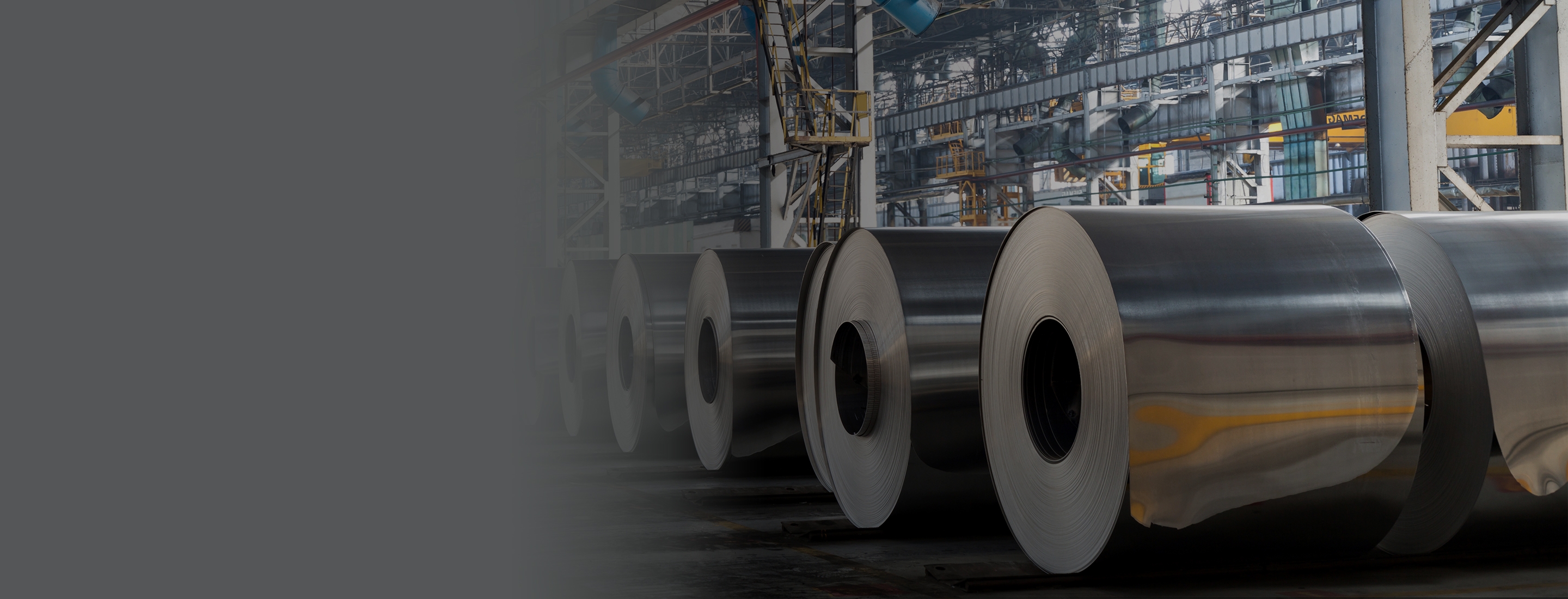
Article
Top 5 indirect tax challenges and tips for manufacturers
At scale, the material impact of indirect taxes — such as sales and use tax, value-added tax (VAT), and goods and services tax (GST) — can be staggering. Most manufacturing companies aren’t tracking this impact and could be losing money as a result. If you aren’t tracking your indirect tax spend, you can refer to our article, “6 questions for manufacturers to reduce sales tax overpayments.”
Overpaying taxes by not checking the tax charged by your suppliers is just giving money away. Underpaying or recovering excess input taxes because your supplier didn’t charge you the correct tax can lead to penalties and interest payments. Supplier tax issues also result in missed prompt payment discounts, supplier frustration, and possible friction. You can avoid overpayments, underpayments, inaccurate input tax recovery, and supplier issues when you understand how to optimize your indirect tax processes. Here, we explore five common indirect tax challenges for manufacturers and tips on overcoming them.
Manufacturing challenge #1: Accurately tracking and reporting indirect taxes and their impact on the overall business
Indirect taxes, which are charged on consumption — how a product will be used — and often involve multiple jurisdictions, can be particularly difficult and cumbersome to manage. The complexity increases as tax regulations become more complicated and manufacturing supply chains expand across jurisdictions. With constantly evolving manufacturing tax rules, even the savviest of tax professionals will find indirect tax compliance challenging. There are also significant cost and tax compliance consequences. When companies get it wrong, they risk losing huge sums of money in hidden overpayments or, in the case of tax audits, they need to pay not only the underpayment amount but also interest and penalties. For some, this can add up to millions of dollars.
Tip #1: Ensure your tax team understands your company’s indirect tax obligations and the most current tax requirements for manufacturing.
Manufacturing challenge #2: Avoiding tax penalties due to incorrect vendor-charged taxes and vendor VAT treatments
It’s also essential for your indirect tax department to check that your vendors are charging your business the correct tax to avoid overpaying vendor-charged tax. Overpayments can add up quickly. In the U.S., if your vendor doesn’t charge the correct amount, your company can be responsible for self-accruing use taxes to ensure that the proper tax is paid.
In Europe, VAT professionals must check that vendors are charging the correct VAT to avoid overpaying input VAT or being subject to taxation in more than one jurisdiction for the same cross-border transaction. When your vendor doesn’t charge domestic VAT for a cross-border transaction, your company becomes responsible for self-assessing taxes to ensure that the correct input and output VAT amounts are declared to the relevant jurisdiction. For more on this, read our tips for manufacturers to maximize VAT recovery.
Inaccurate reporting of vendor-charged tax can result in substantial penalties. Vendor-charged taxes can be very complex to track and manage, and the burden of ensuring they are correct is on you, the manufacturer — or else you risk making these costly over and underpayments.
Tip #2: Invest the time to accurately check your vendor-charged taxes and vendor VAT treatment to avoid tax penalties. For peace of mind, use automated tax software for manufacturers.
Manufacturing challenge #3: Accruing the right amount of use tax on inventory movements and mixed-use items
The U.S. manufacturing industry has unique business tax requirements, including accruing correct use tax on inventory movements and determining the taxability of mixed-use items. For example, you’ll probably require a tax determination when purchasing inventory and then again when you put it into use. Withdrawing items from inventory for consumption — such as for free samples, internal use, or R&D — can also create a tax liability. Similarly, moving inventory items across geographies can subject you to a variety of indirect taxes, even if those items continue to be owned by the same entity.
Tip #3: Implement a tax accrual process to identify such transactions and calculate tax appropriately to minimize audit exposure.
Manufacturing challenge #4: Relying on manual, insufficient vendor-charged tax processes
Managing and tracking indirect taxes requires that your tax team understands the ever-changing tax requirements in each tax jurisdiction where you and your suppliers operate. Often, the tax department will need to check invoices themselves, train AP personnel to check, or rely on IT to augment their systems to check for tax correctly. Manufacturers are finding this nearly impossible when relying on manual processes because it requires a high level of specialized expertise and imposes enormous demands on the department's outside tax as well as the tax team’s time and energy.
Tip #4: Don’t rely on manual processes to validate and reconcile vendor-charged tax.
Manufacturing challenge #5: Making the business case for indirect tax automation
To overcome these unique manufacturing tax requirements and challenges, you need a business case that will convince IT and finance that indirect tax automation is crucial to staying compliant, avoiding overpayments and underpayments, and protecting operational spend. Funding indirect tax automation is the smart thing to do. Although you know that automation will save your manufacturing company an immense amount of time and money, you need to prove it for others to agree to this investment.
Tip #5: Calculate the labor spent on indirect taxes such as sales and use, vendor-charged, and value-added taxes. Plus, add up the extra payments your company has incurred due to errors and overpayments. Both will make compelling arguments for investing in indirect tax automation.
How manufacturers can build a solid business case for automated indirect tax software
The speed and accuracy of automated tax processes can address all these challenges and have an immediate and dramatic effect on your bottom line. Automation with tax software can prevent vendor overpayments, underpayments, and tax penalties that can accumulate and weaken your organization’s financial position. It can free up other business resources like IT and AP so they can perform better in their core function. In addition, your tax team will have more time to search for opportunities to add value — like finding manufacturing incentives and exemptions your business qualifies for or choosing the most optimal supply chain from a net VAT cashflow perspective. But before you can realize any of these benefits, you must convince IT and finance that funding an automated tax solution is the way to go — which means coming up with the numbers to support it.
One approach to building a business case is to tally up the penalties and interest your manufacturing company has incurred due to tax-related errors, add the overpayment amounts, and then add the labor hours spent in audit inquiries. With tax software, you’ll see a significant reduction in these fees and the time spent preparing for audits. Through integrations with your enterprise resource planning (ERP) system, tax software provides an end-to-end global solution for complete and accurate management of sales and use tax, VAT, GST, and other global taxes.
One way manufacturers facilitate this is to perform a reverse audit, which is an internal check of tax determinations and procedure assessments to identify overpayments. For example, a Canadian energy provider was providing natural gas well service in several locations. The company bought materials for the wells — including pumps and drills — and paid people to service and inspect the wells. Tracking the use taxes associated with those goods was complex, and the company was performing the work manually. The company conducted a reverse audit and found it had $7 million in tax overpayments at its Colorado operation alone.
The company then used that data to justify automating and integrating its indirect tax processes with Thomson Reuters ONESOURCE Determination — an indirect tax compliance platform that automates vendor-charged tax reconciliation and helps control operational spend — across its operations.
Automated indirect tax software helps manufacturers overcome vendor-charged tax challenges and protect operational spend
Automated indirect tax software can determine tax obligations in multiple jurisdictions with a speed and accuracy that humans cannot match. With indirect tax automation, manufacturers can:
- Accurately validate vendor-charged tax, accrue use tax, and account for VAT and other global taxes
- Reduce the risk of noncompliance, tax audits, and other costly penalties by tax authorities
- Liberate your indirect tax team’s time to focus on more strategic work
- Enable easy access to information stored in a centralized tax database
- Streamline manufacturing business processes and reduce costs with automation
ONESOURCE Determination provides an automated digital platform for indirect tax that will future-proof your tax processes and scale with growth as you respond to regulatory changes and add new businesses, geographies, and suppliers. You’ll ensure business continuity with easy access to a cloud-based platform. You’ll gain newfound visibility with analytics and reporting that empowers executive decision making and position your indirect tax department as a strategic partner and value driver to the business.
In addition, by paying taxes accurately, you’ll be able to avoid costly tax penalties, freeing up funds for other critical business priorities, including building new facilities, buying equipment, and hiring additional staff. Whether you save $500,000, $5 million, or $50 million, your indirect tax department can become an essential contributor to your business’s growth and profitability — and now is the time to make it happen.
Download our whitepaper to learn how manufacturers can avoid indirect tax overpayments and underpayments, or contact us today about ONESOURCE Determination for manufacturing.
Related insights

Manufacturing sales & use tax software
Automate your vendor-charged tax invoice reconciliation and decrease tax overpayments with procure-to-pay software